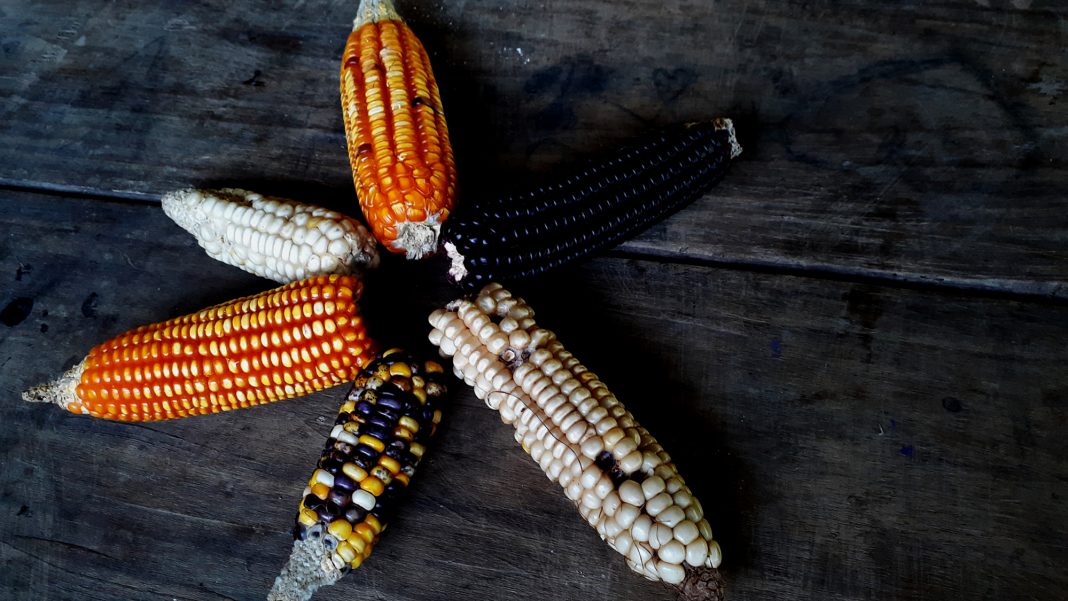The seed? That’s me.
The most unnatural thing is to fear the natural.
But what is natural? Are not all seeds natural?
I am one of those seeds whose roots sprout from the fertility of the mountain, following the rhythm that our ancestors have shown us. But this seed has begun to wonder who it is, and to discover a new rhythm. I see something unusual before me.
I feel a peculiar texture, different, and I hear the crunching sound of my root. Behind me, the wind moves violently through the trees; the earth and the sky begin to rumble; and yet it still feels natural. The only peculiar thing is that it is new. I discovered other seeds that are like me, even though they vibrate at different rates. There is no loneliness. More roots have reached this place. Why haven’t my ancestors brought me here? Because they say it is not the right thing to do.
The basket is my Talamanca Bribri heritage.
My roots lie in lush Alta Talamanca. There, in fertile land, my identity can be traced. In that place I learned how farming works, how rivers work, when and how I should interact with nature.
The women in my home always tried to cultivate in me deep thoughts about life, like woven liana baskets overflowing with ears of corn. They filled my body and soul with years of history, struggle, and knowledge. They built my rebellion and endurance with a firm hand and made sure that this was clear in my mind: that I have enough strength to face even the longest battle. On the hearth, before the fire, they would tell the stories I should learn from and with which we had to understand the world.
I learned to see from within, but also to see with my brothers and sisters. To know that we all exist on the same plane and that we deserve respect, regardless of our differences. That the most natural thing on earth was for each seed to grow in a unique way, but conserving their shared essence as a whole. We are all parts of a whole that is life.
The meetings of the elders of the communities were also a source of answers for this fearful growing seed. There, first of all, they affirmed the concept of yamipa: respect and union. But something about those words was questionable. While it is true that respect and support is essential between us, those ideals seemed to disappear in the air when something did not follow the course of what they call “natural.”

Growing up and getting to know yourself is a complicated process—especially if we don’t have a guiding hand—and it becomes even more stormy if we seem to be treading completely unknown ground. Everything that I have mentioned regarding my learning about life and nature was strongly impregnated with an idea of the right thing. Those stories I listened to so carefully, all my life, usually depicted a man and a woman who, together, maintained the balance. This was the way you saw a family, a community, the order of things.
That is why when I discovered in myself a capacity for attraction regardless of a person’s sex, I found myself walking a tangled path. I had already seen what happened when the norm was broken; I had not expected to plant my feet in that place. However, I had already learned not to shy from a battle.
My curiosity led me to ask the elders over and over again about sexual diversity, because silence and intrigue are no good to anyone. I made sure to listen carefully to what the adults were saying and what the young people were saying. In the process, I discovered a couple of people who shared an excerpt of their life with me. It turns out that most of them received a negative response when talking about their sexuality in their homes. Some were rejected in their social circles. Others had to leave, or resigned themselves to hiding that part of themselves from the world.
Sometimes, I was afraid. It is unusual to ask questions about sexual diversity–or sexuality in general—in indigenous territories. Very few people are open to such discussions. Fortunately, the number of those people is increasing, and there is more and more tolerance. Knowing other stories of indigenous people who are not heteronormative is a source of value for many of us: for this purpose, technology plays an important role today, because it helps us connect with more people with whom we share common struggles. However, it is also necessary to understand that access to technology and information is a privilege of few in indigenous territory. Although this column can reach many people, how many of them will be indigenous?
Many continue to fear discrimination from their own people. Some have left their communities and have sought refuge far from the land where they were born because they know they are seen as “different.” They have faced being labeled as indigenous people who are deviant or disoriented. But unfortunately, leaving their territories does not resolve the conflict. Discrimination continues within the territory, and they face other forms of discrimination in the concrete forest: the city.
The first time I was submerged in the tide of colors on the asphalt at the LGBT+ Pride Day march in San José, I felt like an outsider. It was a march on behalf of the sexually diverse community, and while I was a part of that community, I didn’t feel that way.
I was submerged in stories with different contexts. Most of the people around me, their faces flushed from the heat, lived a different reality than mine. I couldn’t connect with their stories despite the fact that they were talking about sexual diversity, because they didn’t understand the battle for my identity, the implications it had for my culture, and the weight of being an indigenous woman who opposed heteronormativity.
In the end, I found that whether I was inside or outside of indigenous territory, my skin still felt cold. Others continued to see me as different. But I’m not. My brown skin carries stories from my land. My dark hair was braided by the same women who taught me not to let myself be defeated. My body has been strengthened by the environment where I come from. I am a seed from that basket, like any other.






